| Booking.com |

|
 |
|
|
|||||||||||||||||||||||||||||||||||||||||||||||||||||||||||||||||||||||||||||
Nudibranchs |
|||||||||||||||||||||||||||||||||||||||||||||||||||||||||||||||||||||||||||||
10 Facts About the Most Beautiful Slugs in the World |
|||||||||||||||||||||||||||||||||||||||||||||||||||||||||||||||||||||||||||||
Divers in the Maldives are all too familiar with the post-dive chatter about the great stuff, such as sharks and mantas, and also with the in depth description of where to find a frog fish or leaf fish on certain dive sites…but get on a boat with a group of macro fans and the theme of conversation can very often turn to nudibranchs. Usually, when people think the word slug, they imagine something slimy and nasty, but this is not the case when it comes to diving. Nudibranchs is a type of sea slug, actually represented by each color or combination of colors, and very beautiful. They are also every underwater micro photographer’s dreams! Although most of their lives are rather small, the nudibranous is so amazing that it successfully compensates for the lack of size. To a firsttime diver it might be hard to see what all the fuss is about – a tiny, sometimes colourful, slug-like creature slowly moving across the reef – an appreciation for the super small stuff like nudibranchs often comes with experience. To spot these beautiful creatures it is necessary to have a keen eye and to dive slowly, quite close to the reef. Here are 10 pretty slippery facts that you might not know about the nudibranchs. |
|||||||||||||||||||||||||||||||||||||||||||||||||||||||||||||||||||||||||||||
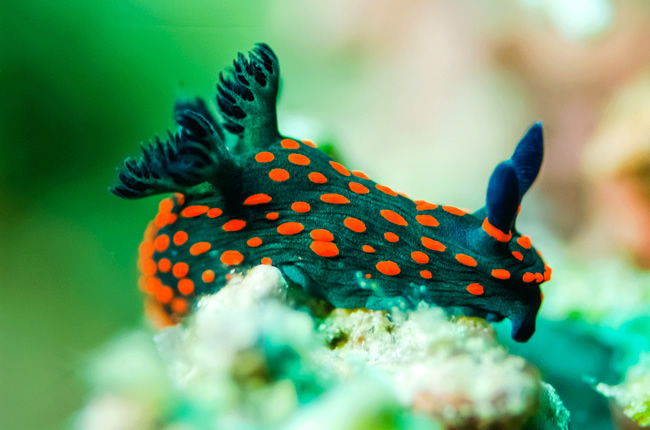 |
|||||||||||||||||||||||||||||||||||||||||||||||||||||||||||||||||||||||||||||
1. Nudibranch comes from the Latin word ‘nudus’ and the Greek word 'brankhia', meaning 'naked' and 'gills', respectively. This name clearly justifies its appearance, because a small bulge in the shape of petals at the end of a slug is nothing but (naked) gills. |
|||||||||||||||||||||||||||||||||||||||||||||||||||||||||||||||||||||||||||||
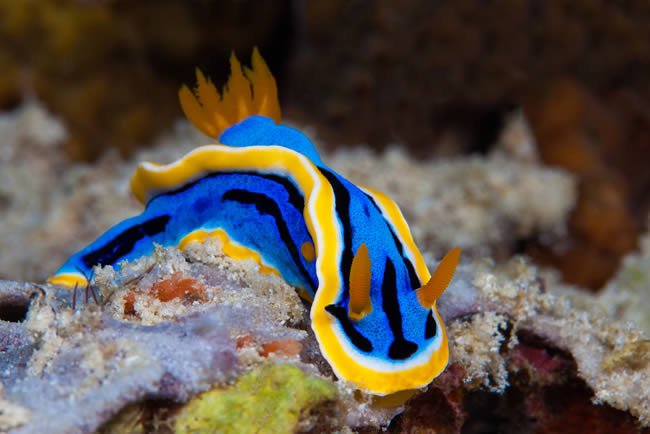 |
|||||||||||||||||||||||||||||||||||||||||||||||||||||||||||||||||||||||||||||
2. This group of marine gastropod mollusks has more than 3,000 species that live from shallow water to depths of 2,500 meters. They can be found in tropical and temperate seas and even in Antarctica, although they prefer warm shoals more. The largest, registered sea slug, was the "Spanish Dancer", 52 cm long found in the Red Sea. |
|||||||||||||||||||||||||||||||||||||||||||||||||||||||||||||||||||||||||||||
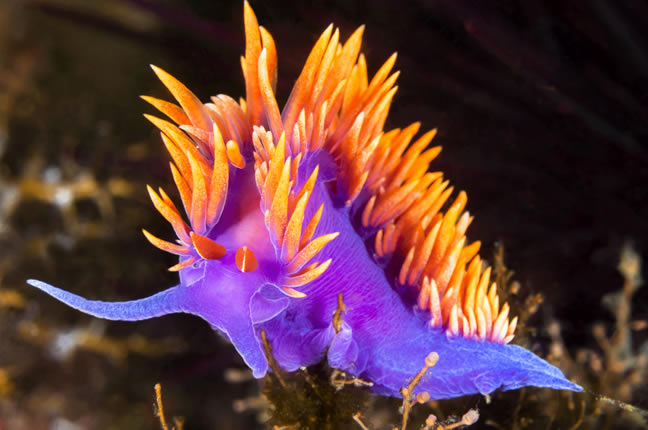 |
|||||||||||||||||||||||||||||||||||||||||||||||||||||||||||||||||||||||||||||
3. Some types of nudibranchs are poisonous, while others pretend to be poisonous, as can be seen from their bright color. This colorful camouflage perfectly masks animals against corals, sponges and other fouling. For masking is often used and the shape of the body, which skillfully imitates the substrate on which this species occurs most often. They feed on hydroid cells and store them in the back of the body for protection. They can also absorb toxins from sponges and become poisonous and inedible. Only a few slug types are capable of producing their own chemicals, most actually stealing them from the foods they eat. Frog fish fry use this property to their advantage and imitate the nudibranch when they are still small and vulnerable. Follow the path of nudibranch! |
|||||||||||||||||||||||||||||||||||||||||||||||||||||||||||||||||||||||||||||
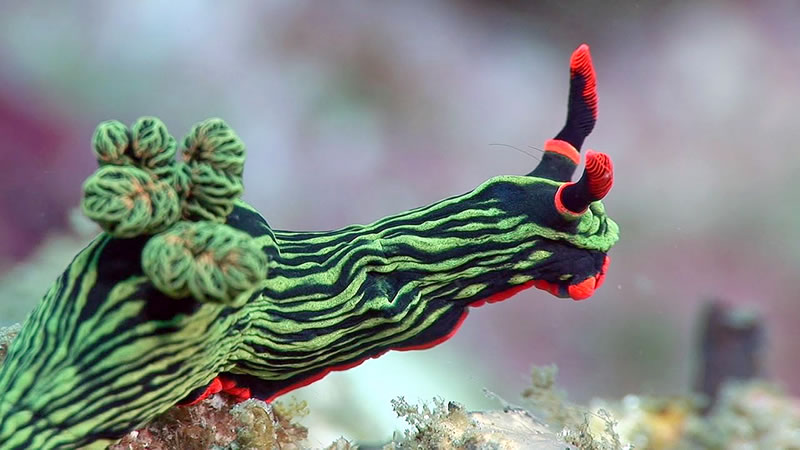 |
|||||||||||||||||||||||||||||||||||||||||||||||||||||||||||||||||||||||||||||
4. At least two kind of nudibranchs can actually make sounds that are heard by the human ear! Scientists in 1884, in their studies, reported the sounds of slugs placed in an aquarium that resembled tapping with a wire over a can, repeated at intervals. It is not known whether these sounds are made to protect, attract a partner, or for other reasons. |
|||||||||||||||||||||||||||||||||||||||||||||||||||||||||||||||||||||||||||||
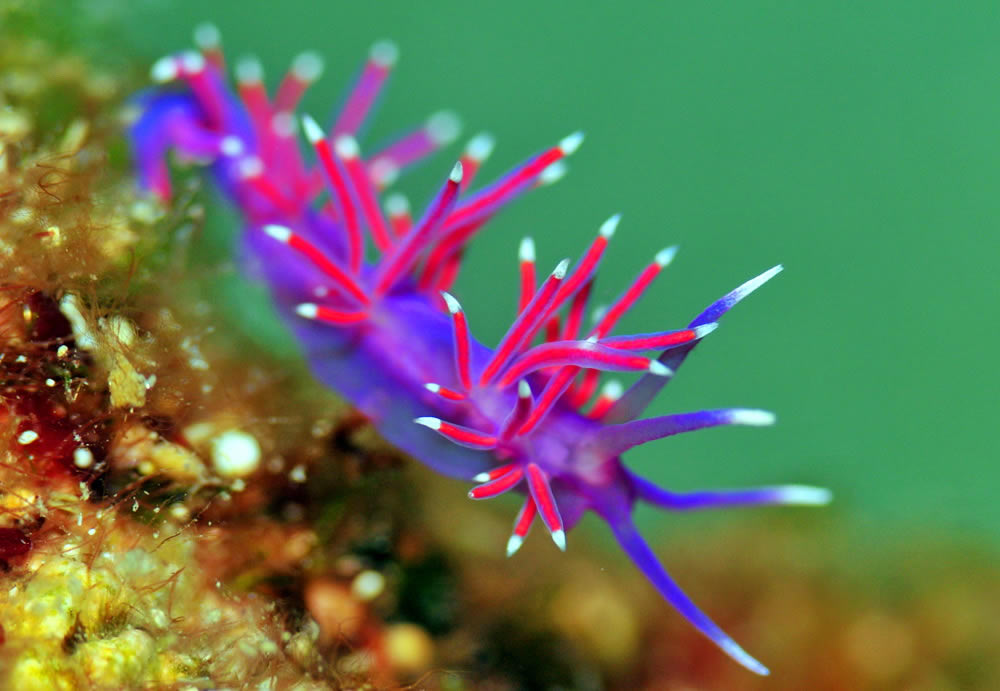 |
|||||||||||||||||||||||||||||||||||||||||||||||||||||||||||||||||||||||||||||
5. Nudibranchs are hermaphrodites! As a rule, each of them is both male and female - they have reproductive organs of both sexes. When mating, they fertilize each other, although the slug itself cannot fertilize itself without the help of another nudibranium. In any case, this is not a roman. Then they both lay their eggs in beautiful counterclockwise spirals, where some contain up to two million eggs at a time. |
|||||||||||||||||||||||||||||||||||||||||||||||||||||||||||||||||||||||||||||
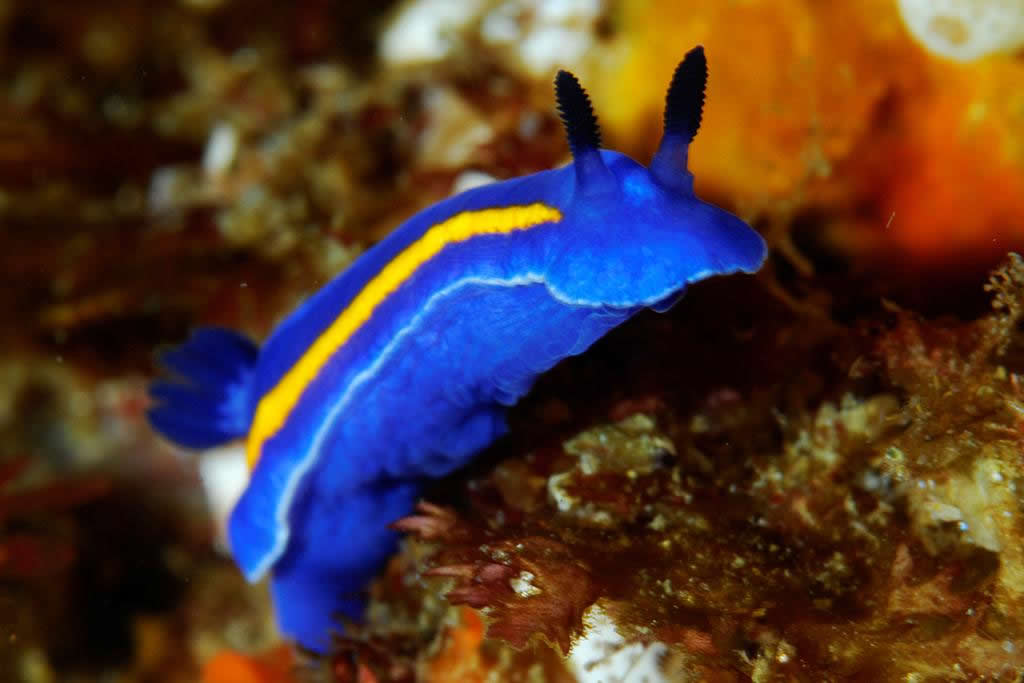 |
|||||||||||||||||||||||||||||||||||||||||||||||||||||||||||||||||||||||||||||
6. Some nudibranch can use solar energy. These species collect algae or parts of coral and store them in their bodies. Algae draw energy from sunlight through photosynthesis, which is then used by the nudibranch. |
|||||||||||||||||||||||||||||||||||||||||||||||||||||||||||||||||||||||||||||
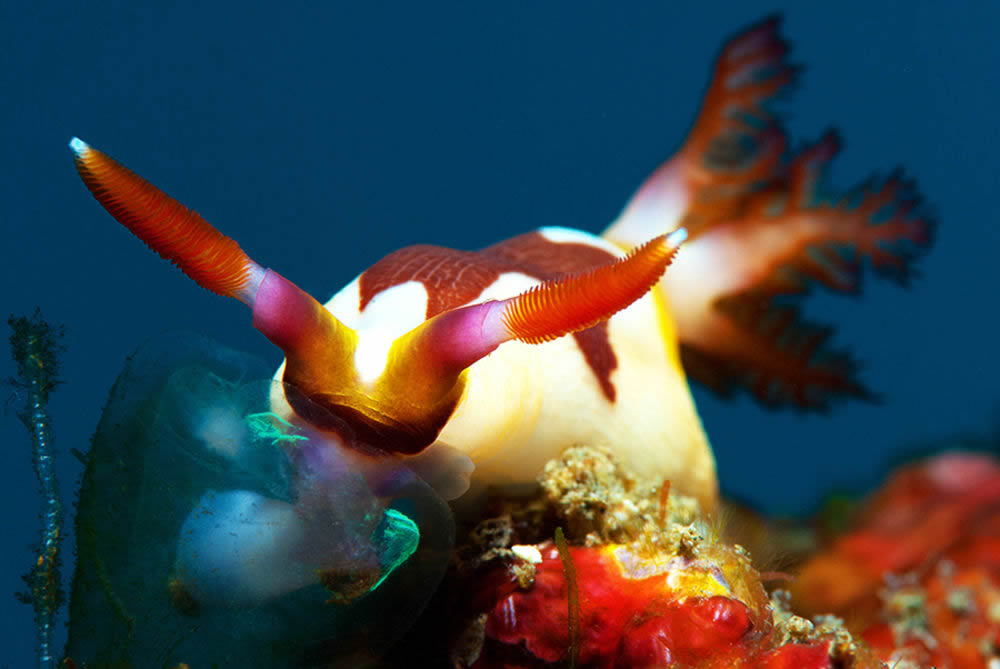 |
|||||||||||||||||||||||||||||||||||||||||||||||||||||||||||||||||||||||||||||
7. The majority of mollusks are members of the benthos, that is they lead a bottom life, but there are several pelagic species that live in the water column or on the surface. One of these species digests the stinging tentacles of the Portuguese Man-of-War, transferring them from its intestines to the surface of the skin, as a defense mechanism. |
|||||||||||||||||||||||||||||||||||||||||||||||||||||||||||||||||||||||||||||
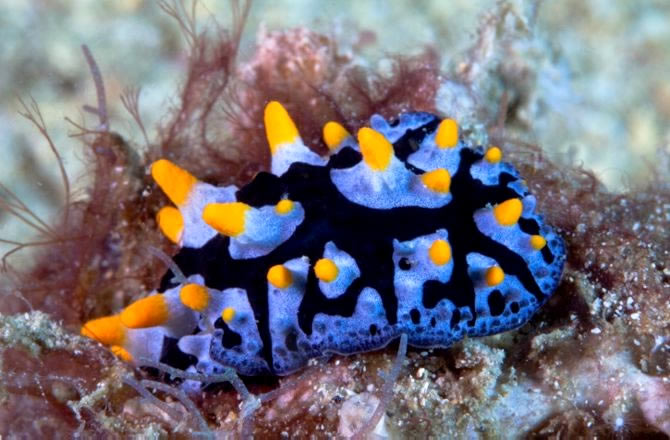 |
|||||||||||||||||||||||||||||||||||||||||||||||||||||||||||||||||||||||||||||
8. The two horns of the naked-shell clam at the crown of the head are actually called rhinophores, from the Greek words ‘rhino’, meaning nose and 'phore ’meaning carrier. Olfactory outgrowths - rhinophores - are relatively large, and they can simultaneously catch both smell and taste. These are mainly chemical receptors that allow the nudibranch to find food and mates. These two horns sticking out of their bodies make the nudibranchs more visible to predators, so they have the ability to pull them in, in case of danger. If you look closely, you can see that they actually have the shape of a feather, which increases the surface area of rhinophores, giving them more opportunities to detect chemicals. |
|||||||||||||||||||||||||||||||||||||||||||||||||||||||||||||||||||||||||||||
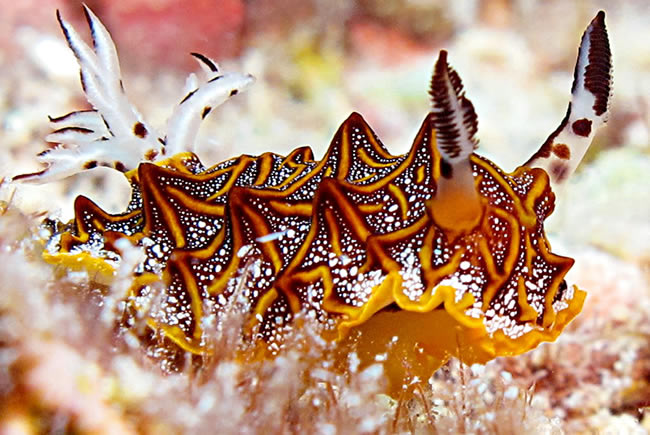 |
|||||||||||||||||||||||||||||||||||||||||||||||||||||||||||||||||||||||||||||
9. Cannibalism thrives in the world of nudibranchs. Some species feed on other mollusks, as well as slugs of their kind! Cannibalism takes place thanks to real teeth and digestive enzymes. |
|||||||||||||||||||||||||||||||||||||||||||||||||||||||||||||||||||||||||||||
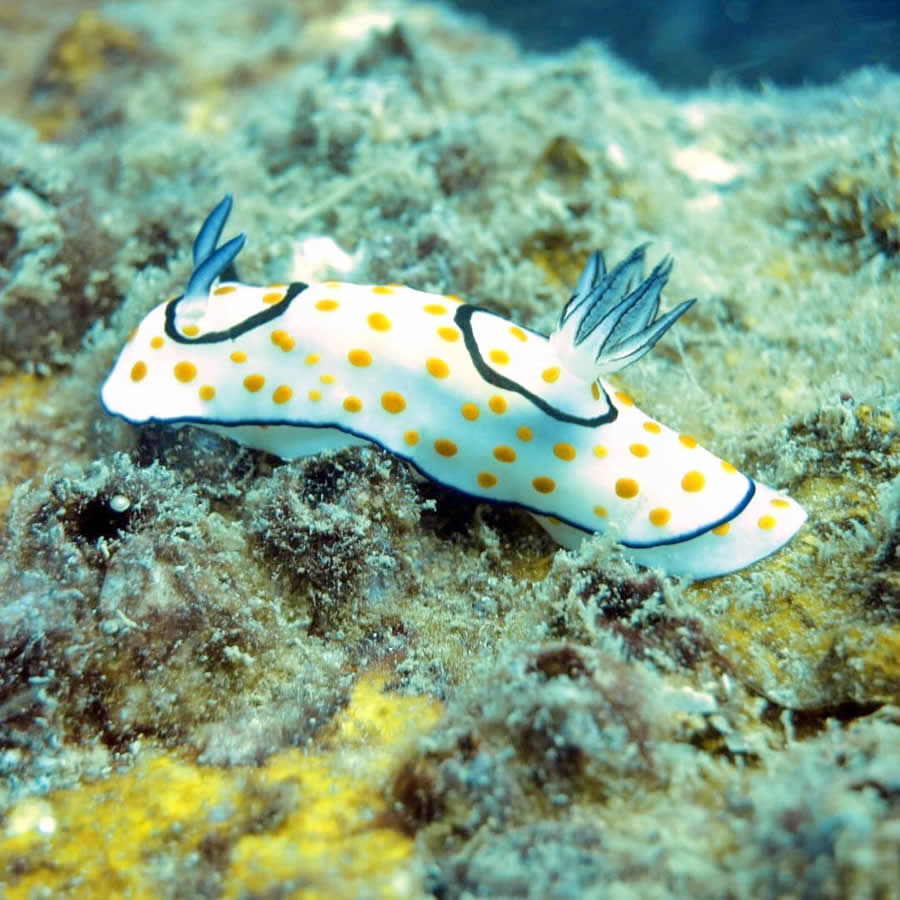 |
|||||||||||||||||||||||||||||||||||||||||||||||||||||||||||||||||||||||||||||
10. Some people actually eat nudibranchs. Chileans and some islands in the Far East in Russia and Alaska are famous for recipes of fried or boiled sea slugs, and sometimes islanders eat them raw. Often, this food is described as “chewing gum”. Nudibranch mollusks do not have economic significance, but they play an important role in marine ecosystems and, undoubtedly, are an ornament of the underwater world. |
|||||||||||||||||||||||||||||||||||||||||||||||||||||||||||||||||||||||||||||
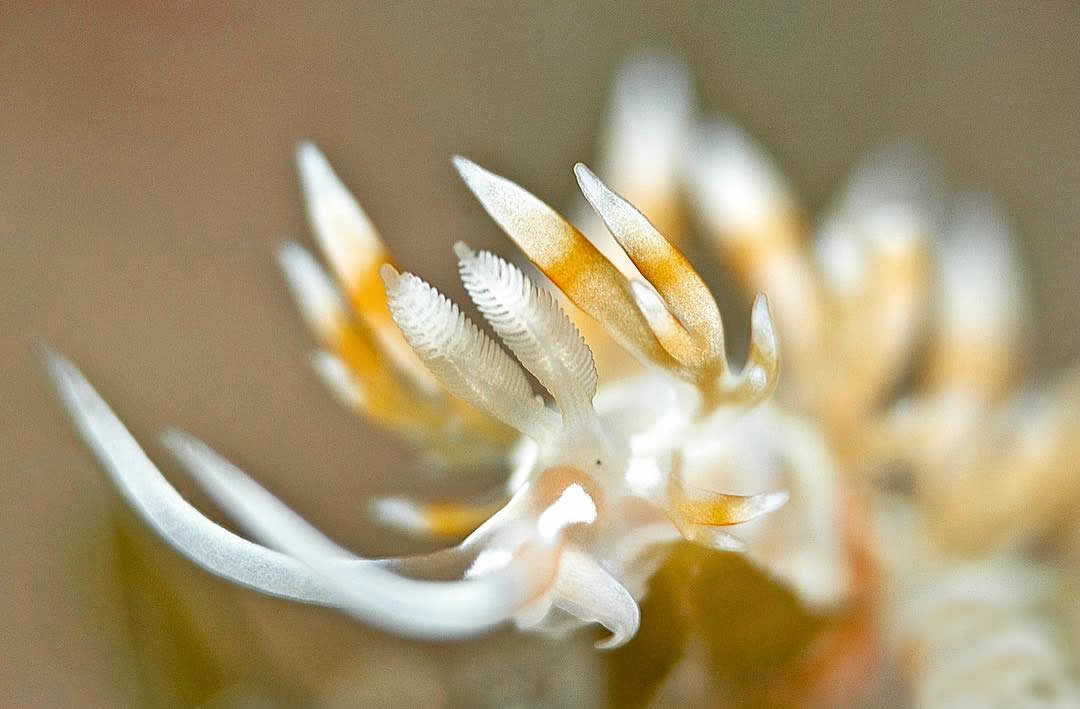 |
|||||||||||||||||||||||||||||||||||||||||||||||||||||||||||||||||||||||||||||
Maldives Best Hotel Deals |
|||||||||||||||||||||||||||||||||||||||||||||||||||||||||||||||||||||||||||||
|
|||||||||||||||||||||||||||||||||||||||||||||||||||||||||||||||||||||||||||||
|
|||||||||||||||||||||||||||||||||||||||||||||||||||||||||||||||||||||||||||||